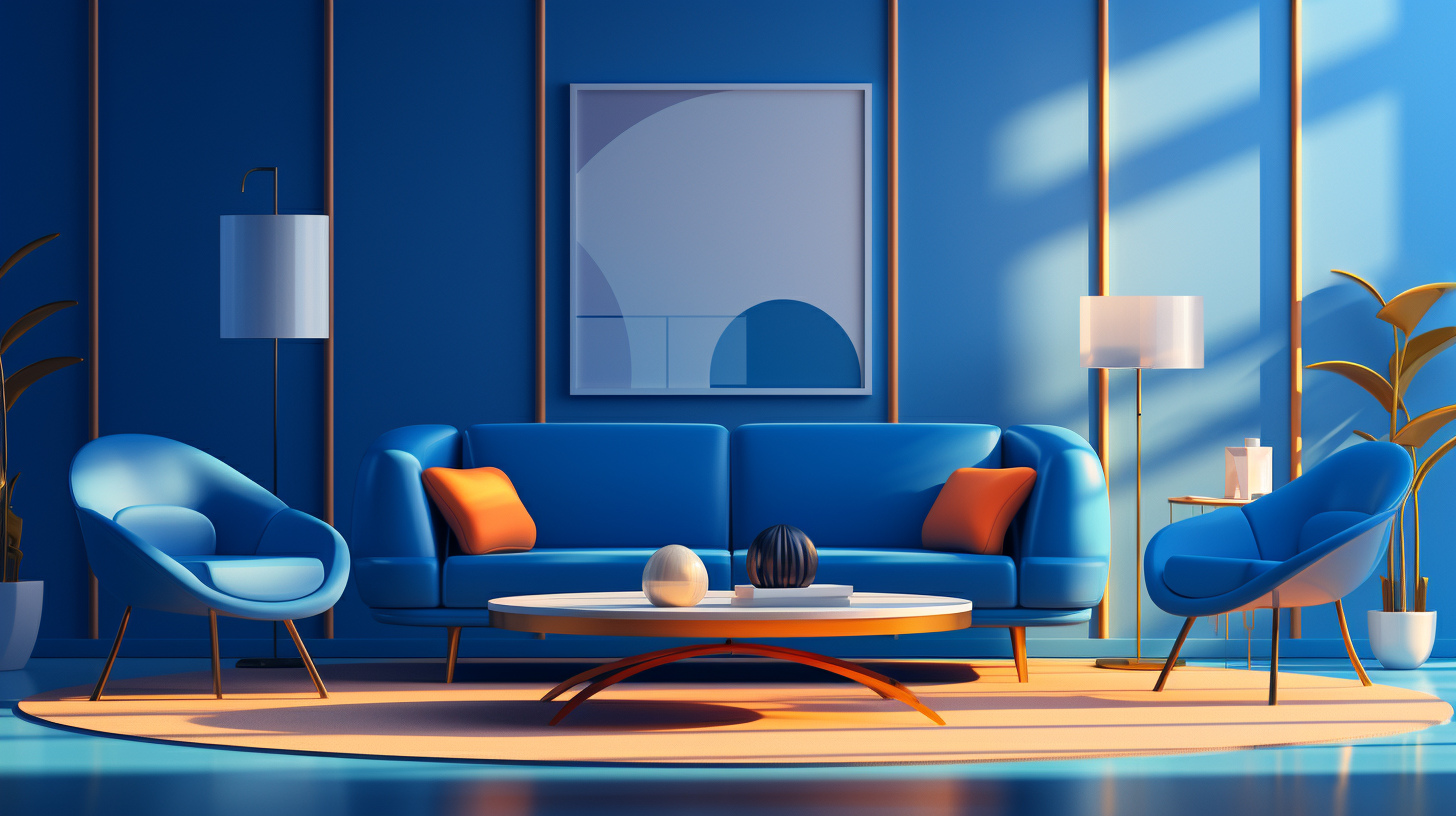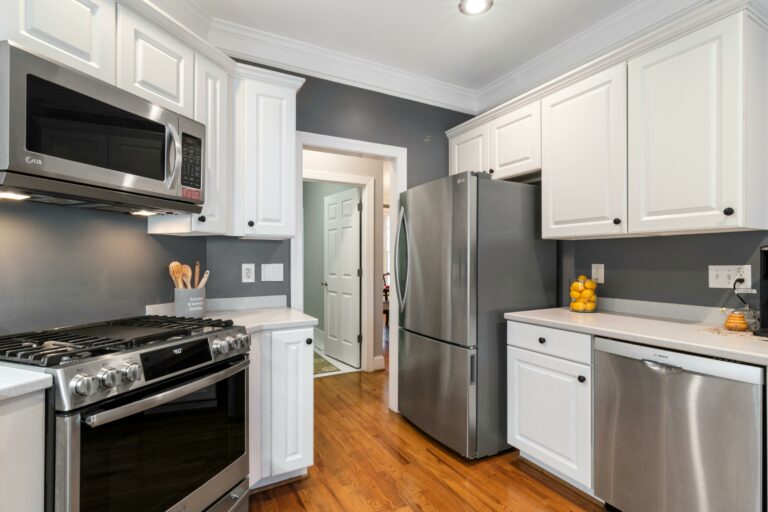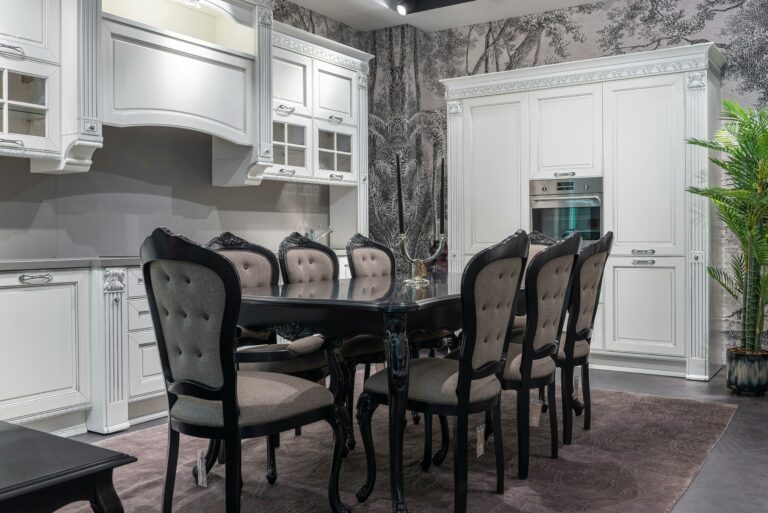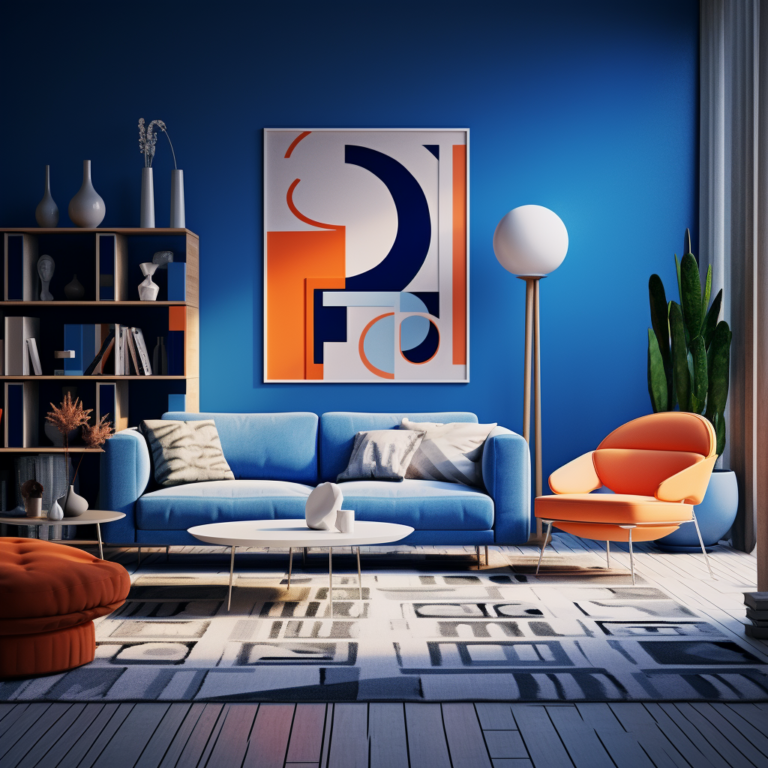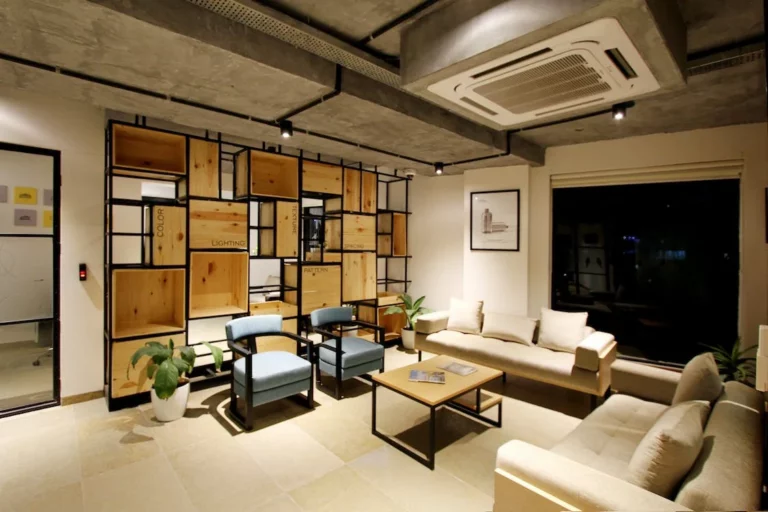The Perfect Blend: Balancing Function and Aesthetics in Your Home Design in 2023
Welcome to the world of home design, where function meets aesthetics, and personal style reigns supreme! Your home is a reflection of who you are, and striking the perfect balance between functionality and aesthetics can transform any space into a sanctuary. Whether you’re redesigning your current home or starting from scratch, understanding how to blend these two crucial elements is essential in creating a space that is both visually appealing and practical.
Table of Contents
- 1 Balancing Function and Aesthetics
- 2 Understanding the Importance of Function and Aesthetics
- 3 Choosing the Right Furniture and Layout
- 4 Color Palettes and Lighting
- 5 The Role of Textures and Materials
- 6 Maximizing Space and Storage Solutions
- 7 Incorporating Personal Style and Art
- 8 Maintaining the Balance Between Function and Aesthetics
- 9 Conclusion
- 10 Frequently Asked Questions
Balancing Function and Aesthetics
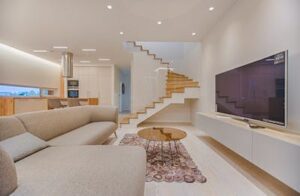
In this article, we will explore the importance of finding the perfect blend, balancing function and aesthetics in your home design. We’ll delve into various aspects such as choosing the right furniture and layout, selecting the perfect color palettes and lighting, incorporating textures and materials, maximizing space and storage solutions, and adding personal style and art. We’ll also touch upon the significance of regular maintenance and how to adapt your design to changing needs and lifestyle.
So, if you’re ready to create a harmonious living environment that not only looks beautiful but also serves you in the best possible way, let’s dive into the world of balancing function and aesthetics in home design.
Understanding the Importance of Function and Aesthetics

When it comes to designing your home, there are two key elements that you should never overlook: function and aesthetics. Functionality ensures that your space is practical and serves your needs, while aesthetics create a visually pleasing environment that delights the senses.
Defining Functionality in Home Design
Functionality in home design refers to how well a space serves its purpose. It involves considering the layout, flow, and organization of each room to ensure that it supports your daily activities. Here are some factors to consider when assessing the functionality of your home design:
- Spatial Layout: Think about the size and shape of each room and how you can maximize the available space. Consider traffic flow and how people will move through the space.
- Ergonomics: Evaluate the comfort and usability of furniture and fixtures. Choose items that are practical and easy to use.
- Storage: Adequate storage is crucial in maintaining an organized and clutter-free space. Evaluate your storage needs and incorporate solutions that meet them.
Exploring the Role of Aesthetics in Creating Harmony
Aesthetics, on the other hand, focus on creating a harmonious and visually appealing atmosphere. It involves choosing the right colors, materials, textures, and lighting to evoke specific moods and enhance the overall design. Here are some key aspects of aesthetics in home design:
- Color Psychology: Colors have the power to influence our emotions and moods. Warm colors like red and orange can create a cozy and intimate atmosphere, while cool colors like blue and green evoke a sense of tranquility.
- Color Schemes: Choosing the right color scheme is essential for creating visual harmony. Consider the color wheel and choose colors that complement each other.
- Lighting: Proper lighting can transform a space. Natural light brings warmth and openness, while artificial lighting sets the mood and enhances specific areas.
- Textures and Materials: Different textures and materials add visual interest and tactile sensations to a room. Combining smooth and rough textures can create a balanced and dynamic design.
By understanding the importance of both function and aesthetics, you can create a home design that not only looks good but also functions well for your everyday needs. In the next section, we will delve deeper into how to choose the right furniture and layout to achieve this balance.
Choosing the Right Furniture and Layout
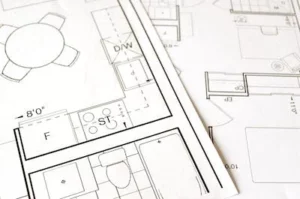
When it comes to designing your home, choosing the right furniture and layout is crucial in maintaining a balance between function and aesthetics. The furniture you select and the way you arrange it can greatly impact the overall look and feel of your space. Here are some key considerations to keep in mind:
Considering the Functionality of Each Space
Before selecting furniture, it’s essential to consider the functionality of each space in your home. Ask yourself questions like:
- How will this space be used?
- What activities will take place here?
- How many people will typically be in this space at once?
Understanding the specific needs of each room will help guide your furniture choices. For example, a living room meant for relaxation and entertainment may require comfortable seating options like a sofa and armchairs. On the other hand, a home office would benefit from a desk and ergonomic chair for productivity.
Selecting Furniture Pieces that Match Your Style
While functionality is important, don’t forget to consider your personal style when choosing furniture. Your furniture should not only serve its purpose but also complement the overall design aesthetic of your home. Here are a few tips for selecting furniture that matches your style:
- Consider the existing style and decor of your home. Is it modern, traditional, or eclectic?
- Think about the colors and finishes that appeal to you. Do you prefer bold and vibrant hues or muted and earthy tones?
- Pay attention to the materials and textures that are prevalent in your space. Are you drawn to sleek, smooth surfaces or rustic, textured finishes?
By selecting furniture that aligns with your style preferences, you can create a cohesive and visually pleasing design.
Arranging Furniture for Optimal Flow and Usage
Once you have chosen the right furniture pieces, it’s time to arrange them in a way that maximizes flow and usage. Consider the following tips for arranging furniture in your space:
- Start by measuring the dimensions of your room to ensure that your furniture fits properly.
- Create clear pathways that allow for easy movement throughout the space.
- Arrange furniture in a way that encourages conversation and interaction.
- Consider the focal points of the room, such as a fireplace or a television, and position furniture accordingly.
Don’t be afraid to experiment with different arrangements until you find one that feels balanced and functional. Remember, the goal is to create a space that not only looks good but also serves its purpose well.
By carefully choosing the right furniture pieces and arranging them thoughtfully, you can achieve a harmonious balance between function and aesthetics in your home design. So go ahead, get creative, and make your space a reflection of your personal style and needs.
Color Palettes and Lighting

When it comes to home design, color palettes and lighting play a crucial role in creating a harmonious and aesthetically pleasing space. The right colors can evoke different emotions and set the mood for each room, while proper lighting can enhance the design and functionality of the space. Let’s explore how you can make the most of color palettes and lighting in your home design.
Exploring the Psychology of Colors
Colors have the power to influence our emotions and affect our mood. Understanding the psychology of colors can help you choose the right color scheme for each room in your home. Here are some popular colors and the emotions they evoke:
- Blue: Blue is known to have a calming effect and is perfect for creating a serene and peaceful atmosphere in bedrooms or bathrooms.
- Yellow: Yellow is a vibrant and energetic color that can bring warmth and positivity to your living room or kitchen.
- Green: Green is often associated with nature and can create a sense of tranquility in any space. It works well in bedrooms or home offices.
- Red: Red is a bold and intense color that can stimulate energy and passion. It can be used as an accent color in areas where you want to create a sense of excitement, like a dining area or entertainment room.
Finding the Right Color Scheme for Each Room
Once you understand the emotions behind different colors, it’s time to choose the right color scheme for each room. Here are some tips to help you find the perfect color palette:
- Consider the purpose of the room: Think about the function of the room and the mood you want to create. For example, for a relaxing bedroom, choose calming colors like blues or neutrals. For a vibrant home office, consider energizing colors like yellows or greens.
- Look for inspiration: Browse through interior design magazines, websites, or social media platforms for inspiration. Pay attention to color combinations that catch your eye and consider how they might work in your space.
- Test the colors: Before committing to a color scheme, it’s important to test the colors in your space. Paint small swatches on the walls and observe how they look in different lighting conditions throughout the day. This will help you make an informed decision and ensure the colors work well with the natural lighting in your home.
Utilizing Natural and Artificial Lighting to Enhance the Design
Lighting is a crucial element in home design that can greatly impact the overall look and feel of a space. Here are some tips for utilizing natural and artificial lighting to enhance your design:
- Maximize natural light: Utilize natural light as much as possible by positioning furniture and accessories to allow light to flow into the room. Consider removing heavy curtains or using sheer curtains to maximize the natural light.
- Choose the right artificial lighting: Layering different types of lighting can create depth and warmth in your space. Use a combination of ambient lighting, task lighting, and accent lighting to highlight different areas and create a welcoming atmosphere.
- Consider the color temperature: Pay attention to the color temperature of your light bulbs. Warmer tones (around 2700K) create a cozy atmosphere, while cooler tones (around 5000K) mimic natural daylight and work well in areas where you need focused task lighting, such as a kitchen or home office.
By carefully choosing your color palettes and lighting options, you can create a space that not only looks beautiful but also feels inviting and functional. Don’t be afraid to experiment with different colors and lighting techniques to find what works best for your home. Remember, the perfect blend of color and light can transform an ordinary space into an extraordinary one.
The Role of Textures and Materials

When it comes to designing your home, one of the key factors to consider is the role that textures and materials play in creating a visually appealing and comfortable space. The textures and materials you choose can greatly impact the overall aesthetics and functionality of your home. By finding the perfect balance between different textures and selecting durable and beautiful materials, you can create a harmonious and inviting environment that reflects your personal style.
Incorporating Different Textures for Visual Interest
Textures are an essential element in home design as they can add depth, visual interest, and tactile experiences to a room. By incorporating various textures, you can create a multi-dimensional space that is visually pleasing and engaging. Some ways to incorporate different textures into your home design include:
- Mixing smooth and rough textures: Combine materials like velvet, silk, or smooth leather with rougher textures like woven fabrics or burlap to create contrast.
- Adding natural elements: Incorporate natural materials such as wood, stone, or natural fibers like jute or sisal to bring a touch of the outdoors inside.
- Playing with patterns: Incorporating patterns can also add texture to a space. Consider using patterned wallpapers, textured rugs, or fabrics with unique patterns to create visual interest.
Choosing Materials that Combine Beauty and Durability
When selecting materials for your home design, it’s important to balance both beauty and durability. You want your space to not only look great but also stand the test of time. Here are some tips for choosing materials that combine both:
- Flooring: Consider materials like hardwood or tiles that are not only visually appealing but also durable and easy to maintain.
- Countertops: Opt for materials like granite, quartz, or marble that are both beautiful and resistant to stains and scratches.
- Upholstery: Choose fabrics that are not only aesthetically pleasing but also durable and easy to clean. Look for materials with a high rub count and stain-resistant properties.
Balancing Different Textures for a Harmonious Design
While incorporating different textures into your home design can add visual interest, it’s important to maintain a sense of balance and harmony. Here are some tips for achieving a well-balanced design:
- Limit the number of textures: Avoid overwhelming a space with too many different textures. Stick to a few key textures that complement each other.
- Consider the overall theme or style: Choose textures that align with the overall theme or style of your home. For example, if you have a rustic-themed space, incorporate textures like reclaimed wood or distressed finishes.
- Pay attention to scale: Consider the size and scale of the textures you use. Mixing different scales can add interest and depth to a room.
- Use textures strategically: Focus on incorporating textures in specific areas of your space to create focal points or highlight certain elements.
By carefully selecting and balancing textures and materials, you can create a home that is both visually stunning and functional. Remember to choose materials that are not only aesthetically pleasing but also durable and easy to maintain. With a thoughtful approach, you can achieve a harmonious design that reflects your personal style and provides a comfortable living environment.
Maximizing Space and Storage Solutions

When it comes to home design, one of the biggest challenges we often face is maximizing space and finding storage solutions. Whether you have a small apartment or a spacious house, having effective ways to utilize every inch of your space is essential for both function and aesthetics. In this section, we will explore some practical tips and ideas to help you maximize space and find the perfect storage solutions for your home.
Smart Space Planning for Optimal Functionality
One of the first steps in maximizing space is to carefully plan the layout of your home. Here are some tips to help you optimize functionality:
- Consider the flow: Think about how you move through your space and arrange furniture accordingly. Avoid blocking pathways or creating obstacles that hinder movement.
- Declutter: Before you start planning, declutter your space and get rid of items that you no longer need or use. This will help create a clean and organized environment.
- Multi-purpose furniture: Invest in furniture that serves more than one purpose. For example, a sofa with built-in storage, a coffee table that can be used as a desk, or a bed with drawers underneath. These multi-functional pieces can save space while providing extra storage.
- Customization: Consider customizing storage solutions to fit your specific needs. Built-in shelves, cabinets, and closets can be tailored to make the most of your available space and provide ample storage.
Creative Storage Solutions to Reduce Clutter
Once you have planned your space, it’s time to get creative with storage solutions. Here are some ideas:
- Vertical storage: Utilize wall space by installing shelves or hanging organizers. This is especially useful in smaller rooms where floor space is limited.
- Underutilized areas: Make use of underutilized spaces such as the area under stairs, above cabinets, or even the space above doors. Install shelving or hooks to create additional storage options.
- Maximize closet space: Organize closets efficiently using stackable storage bins, hanging organizers, and shoe racks. Consider using vacuum-sealed bags to save space when storing out-of-season clothing or bedding.
- Utilize the space behind doors: Hang hooks or over-the-door organizers to store smaller items like bags, scarves, or cleaning supplies. This way, you can make use of often overlooked space.
- Floating shelves and wall-mounted storage: Install floating shelves or wall-mounted storage units to display decor items or store books, plants, or small accessories. This not only adds functionality but also adds visual interest to your space.
Utilizing Multifunctional Furniture to Maximize Space
Incorporating multifunctional furniture is a great way to maximize space while adding style to your home. Here are some ideas:
- Convertible sofa: Invest in a sofa that can be transformed into a bed. This is especially useful if you have limited space and occasionally need extra sleeping accommodations.
- Foldable dining table: Consider a dining table that can be folded and stored when not in use. This allows you to free up space for other activities or create a more open layout.
- Storage ottomans: Use ottomans that double as storage. These can be used as seating, footrests, and also as a place to store items like blankets, pillows, or board games.
- Nesting tables: Opt for nesting tables that can be stacked together when not in use. This way, you can easily create additional surface space when needed and store them away when not in use.
Remember, the key to maximizing space and finding storage solutions is to think creatively and use every nook and cranny to your advantage. By implementing these ideas and utilizing multifunctional furniture, you can transform your home into a well-organized, clutter-free, and visually appealing space.
Incorporating Personal Style and Art

When it comes to designing your home, it’s essential to make it a reflection of your personal style and taste. Incorporating your own unique touch will not only make your space more inviting and comfortable but will also add a sense of personality and identity. One way to achieve this is by incorporating art into your home design. Art can significantly enhance the aesthetics of your space while allowing you to showcase your individuality. Here are some tips for incorporating personal style and art into your home:
Adding Personal Touches to Reflect Your Identity
- Start by selecting furniture, decor, and accessories that resonate with your personal style. Whether you prefer a modern, contemporary, traditional, or eclectic look, choose pieces that truly speak to you.
- Display items that hold sentimental value or have a personal significance. This could be a family heirloom, a travel memento, or artwork created by a loved one.
- Incorporate elements that showcase your hobbies, interests, or passions. If you’re a music lover, display your instruments or vinyl collection. If you’re a bookworm, create a cozy reading nook with a comfortable chair and shelves filled with your favorite books.
Understanding the Impact of Art in Home Design
- Art has the power to transform any space and evoke emotions. Whether it’s a painting, sculpture, or photography, carefully chosen art pieces can create a focal point and set the tone for the entire room.
- Consider the size, colors, and subject matter of the artwork you select. Look for pieces that complement your existing color scheme and style, or ones that provide a striking contrast to add visual interest.
- Experiment with different mediums and styles to create a dynamic and diverse art collection. Mix abstract pieces with landscapes, or contemporary artwork with vintage prints, to create a visually stimulating and unique display.
Incorporating Artistic Elements for Enhanced Aesthetics
- Use art as a tool to create a cohesive design throughout your home. Consider the theme or mood you want to achieve and select artwork that aligns with it. For instance, if you want a serene and calming atmosphere, opt for soothing landscapes or abstract pieces with a soft color palette.
- Don’t limit yourself to traditional wall art. Explore other artistic elements, such as decorative tiles, textile artwork, or even a stunning chandelier, to add a touch of creativity and elevate your interior design.
- Experiment with different placement and arrangements. Instead of hanging a single large artwork, consider creating a gallery wall with a collection of smaller pieces or mix different-sized artworks on a mantelpiece or shelf.
Remember, the key to successfully incorporating personal style and art into your home is to be true to yourself. Trust your instincts and choose pieces that bring you joy and inspire you. By doing so, you’ll create a space that not only reflects your personality but also becomes an extension of your identity.
Now that you know how to incorporate personal style and art into your home design, you can explore different ways to infuse your space with your individuality. From selecting furniture that resonates with your taste to choosing artwork that speaks to your soul, each decision you make will contribute to creating a home that truly reflects who you are. So go ahead, let your creativity flow, and enjoy the process of transforming your space into a personalized haven.
Maintaining the Balance Between Function and Aesthetics

Once you have designed and decorated your home to achieve the perfect blend of function and aesthetics, it is important to maintain this balance to ensure that your space remains visually appealing and practical for everyday use. Here are some tips to help you maintain the balance between function and aesthetics in your home design:
Regular Maintenance and Cleaning
Regular maintenance and cleaning are essential to keep your home looking and functioning its best. Here are a few things you can do to maintain the balance between function and aesthetics:
- Clean and declutter regularly: Eliminate any unnecessary items and keep your space tidy to maintain a sense of order and functionality. Dust, vacuum, and clean surfaces to keep everything looking clean and fresh.
- Check for wear and tear: Regularly inspect your furniture, fixtures, and appliances for any signs of wear and tear. Address any issues promptly to prevent further damage and ensure that everything continues to function properly.
- Maintain your color scheme: Touch up any scuffs or chips on your walls and furniture to keep your color scheme looking fresh and vibrant. Consider repainting or reupholstering if necessary.
- Keep up with repairs: Fix any broken or malfunctioning elements in your home, such as leaky faucets or squeaky hinges. Keeping everything in good working order will enhance the functionality and aesthetics of your space.
Periodic Design Updates and Renovations
As your needs and tastes evolve over time, it is important to periodically update your home’s design to maintain the balance between function and aesthetics. Here are a few ideas for updating your space:
- Stay informed about design trends: Keep up with the latest trends and innovations in home design to ensure that your space remains fresh and current. Incorporate new materials, colors, and styles to enhance both function and aesthetics.
- Consider seasonal updates: Make seasonal updates to your decor, such as changing out throw pillows, curtains, or rugs, to reflect the changing seasons. This can help create a fresh look and create a sense of comfort and harmony in your space.
- Explore new layouts: Consider rearranging your furniture or exploring new layouts to optimize the functionality of your space. Experiment with different furniture arrangements to find the best flow and use of space.
- Upgrade fixtures and appliances: If your budget allows, consider upgrading fixtures and appliances to improve both function and aesthetics. This can include items such as faucets, lighting fixtures, or kitchen appliances.
- Plan for future needs: Anticipate any future changes to your lifestyle or family dynamics, and plan your design updates accordingly. This can help you to design a space that is adaptable to your changing needs over time.
Adapting to Changing Needs and Lifestyle
As life evolves, so do our needs and lifestyles. To maintain the balance between function and aesthetics, it is important to adapt your home design to accommodate these changes. Here are some considerations:
- Evaluate your space regularly: Periodically assess your space to identify areas that may no longer serve your needs or that could benefit from improvement. This could include reconfiguring rooms, adding storage solutions, or repurposing underutilized spaces.
- Embrace flexibility: Opt for furniture and decor that can adapt to different uses and configurations. Look for modular or multifunctional pieces that can easily be adjusted to accommodate changing needs.
- Prioritize functionality: As your lifestyle changes, reassess the functionality of your space. Consider how you can customize your home to better suit your needs, whether it’s creating a dedicated home office or adding a playroom for your growing family.
- Stay true to your style: While it is important to adapt your design to your changing needs, don’t sacrifice your personal style and aesthetic preferences. Look for creative solutions that blend functionality with your unique design taste.
By regularly maintaining your space, periodically updating your design, and adapting to changing needs, you can ensure that the balance between function and aesthetics in your home remains in perfect harmony. Remember, a well-balanced home design not only looks beautiful but also enhances your daily living experience. So, enjoy the process of creating and maintaining your perfect blend of function and aesthetics!
Also read; Designing a Functional and Stylish Kids’ Bedroom in 2023
Conclusion
The perfect blend of function and aesthetics is key to creating a home design that is both visually appealing and practical. By understanding the importance of both aspects and making thoughtful choices in furniture, layout, color palettes, lighting, textures, materials, space planning, storage solutions, personal style, and maintenance, you can achieve a balance that enhances your everyday living experience.
Remember, functionality should never be compromised for the sake of aesthetics. Your home should be a space that not only looks good but also meets your practical needs and supports your lifestyle. By investing time and effort into understanding the purpose of each space and selecting furniture pieces that match your style without sacrificing usability, you can create a home that is both beautiful and functional.
Color palettes and lighting play a crucial role in setting the mood and atmosphere of each room. By exploring the psychology of colors and finding the right color schemes for each space, you can create a harmonious environment that promotes relaxation, productivity, or socializing, depending on the room’s purpose. Additionally, utilizing natural and artificial lighting can enhance the design and create a welcoming ambiance.
Textures and materials add depth and visual interest to your home design. By incorporating different textures and choosing materials that combine beauty and durability, you can create a multi-dimensional space that appeals to both the eye and the touch. Balancing these different textures is essential to maintaining a cohesive and harmonious design throughout your home.
Maximizing space and storage solutions is crucial, especially in smaller homes or apartments. Smart space planning and creative storage solutions help reduce clutter and make the most of the available square footage. Additionally, utilizing multifunctional furniture can save valuable space while still providing necessary functionality.
Incorporating personal style and art allows you to add unique touches that reflect your identity and make your home truly yours. Whether it’s displaying personal mementos, incorporating art pieces, or adding artistic elements to your design, these elements can enhance the overall aesthetics and create a space that feels personal and inviting.
Maintaining the balance between function and aesthetics requires regular maintenance and cleaning to keep your home looking and functioning at its best. Periodic design updates and renovations can also help refresh the space and adapt to changing needs and lifestyle. By staying aware of your evolving requirements, you can ensure that your home continues to meet your expectations over time.
In conclusion, finding the perfect blend of function and aesthetics in your home design is an ongoing process that requires thoughtful consideration and planning. By understanding the importance of both aspects and making choices that prioritize usability and visual appeal, you can create a home that is not only beautiful but also enhances your daily living experience. So go ahead, start blending function and aesthetics in your home and create a space that truly feels like your own.
Frequently Asked Questions
- How do I achieve a balance between function and aesthetics in home design?Achieving a balance between function and aesthetics in home design can be done by prioritizing functionality, selecting versatile furniture and decor, utilizing storage solutions, incorporating visual focal points, and considering the overall flow and layout of the space.
- What are some practical tips for incorporating functionality into home design?Some practical tips for incorporating functionality into home design include maximizing storage space, choosing durable and easy-to-maintain materials, opting for multi-purpose furniture, ensuring good lighting and ventilation, and creating designated areas for specific activities.
- How can I enhance the aesthetics of my home without compromising on functionality?You can enhance the aesthetics of your home without compromising on functionality by selecting furniture and decor that aligns with your personal style, adding pops of color and textures, incorporating artwork and accessories, and paying attention to details such as curtains, rugs, and lighting fixtures.
- What are some common mistakes to avoid when trying to balance function and aesthetics in home design?Some common mistakes to avoid include cluttering the space with unnecessary objects, sacrificing comfort for style, neglecting practicality in furniture choices, overdoing trends, and ignoring the natural flow and functionality of the space.
- How can I personalize my home design while maintaining functionality and aesthetics?You can personalize your home design by integrating elements that reflect your personality and interests, incorporating sentimental items, adding personal touches through accessories and artwork, and ensuring that the design choices align with your lifestyle and preferences.

